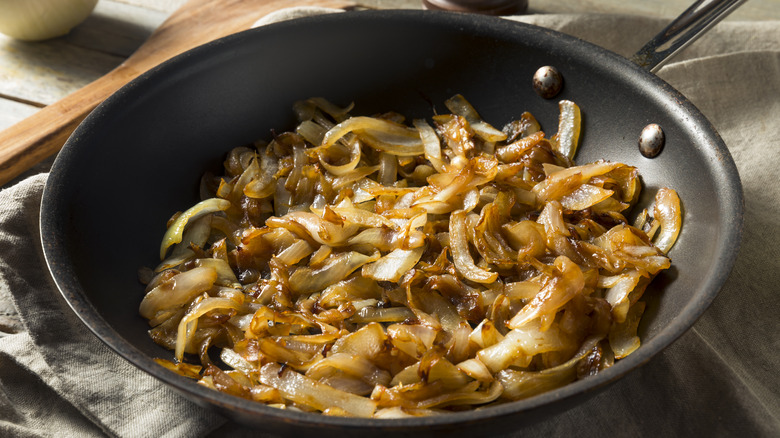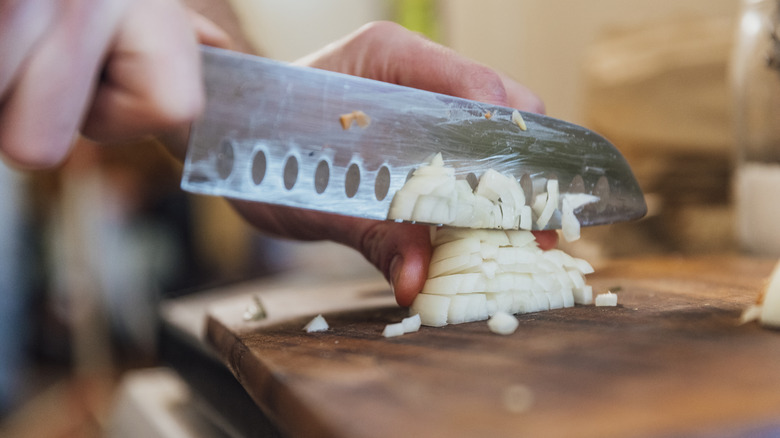Ina Garten's Pro Tip For Faster Caramelized Onions
We may receive a commission on purchases made from links.
Caramelized onions are delicious on just about anything. They add a mouthwatering burst of flavor to a variety of meals like burgers, pizza, pasta — such as caramelized onion fettuccine or even mac and cheese — soups, sandwiches, and more. And the best part is that they're incredibly easy to whip up, requiring only sliced onions, butter or oil, and just a smidgen of patience. It's best to caramelize onions over low heat to keep them from burning, which normally takes at least 45 minutes in order to get them deeply browned to perfection.
Leave it to Ina Garten to make the entire process even easier and faster. In her 2018 cookbook "Cook Like A Pro," the Barefoot Contessa shared a clever tip for browning a batch of onions, which simply involves using a bigger pot. She notes that the larger bottom surface will help cook the onions far better and more quickly compared to a small pot. Using too small of a pot can cause the onions to steam instead of caramelize, resulting in them taking far longer to cook.
The best type of pan for caramelizing onions
Just because you can caramelize onions in any pan doesn't mean you should. And when it comes to browning onions, using the wrong pan is one of the easiest mistakes to avoid. Thick-bottomed cast iron or stainless steel pans that are especially wide are the best. However, it also depends on the amount of onions you plan to sauté.
For example, if you plan to brown two large onions, a good rule of thumb is to use a 12-inch pan. This helps to ensure that the sliced onions aren't overcrowded in the vessel, which can result in them steaming instead of browning.
Another pro tip: You should avoid using a non-stick pan. Caramelizing onions in a non-stick skillet means you won't get that delicious fond, or browned bits of food that stick to the bottom of the pan, which only adds to their savory flavor.
Other tips for browning onions
Using too small of a pan isn't the only no-no when it comes to browning onions. Slicing them too thinly can have disastrous consequences, too, making them more likely to stick to the bottom of the pan and burn. To help prevent this from happening, you should aim for slices that are at least ⅛-inch thick.
In her "Cook Like A Pro" cookbook, Garten also shares a better method for slicing onions, which involves cutting them in half and peeling them but leaving the vegetable's root end intact until after you've sliced them up. The root end helps hold the onion's layers together, making it easier to slice. It may also allow for tear-free chopping because the onion's highest concentration of sulfur compounds — the stuff that makes your eyes well up — is found in its root end.
And, as previously mentioned, low and slow is the way to go as far as caramelizing onions is concerned. Although you may be tempted to crank up the heat, you have to give the natural sugars found in the onion time to brown. Cook them any hotter than medium heat and they will probably burn. As the saying goes, slow and steady wins the race.



